Home » Converting a Campervan: A Beginners Guide
Converting a Campervan: A Beginners Guide
Are you a rookie when it comes to converting a campervan? You’re not alone. Each and every converter started out where you are today. Time and again we see people facing the same hurdle…weight.
To save you the hassle of scrolling through endless websites trying to find the best advice, we have put together this beginners guide to campervan weight.
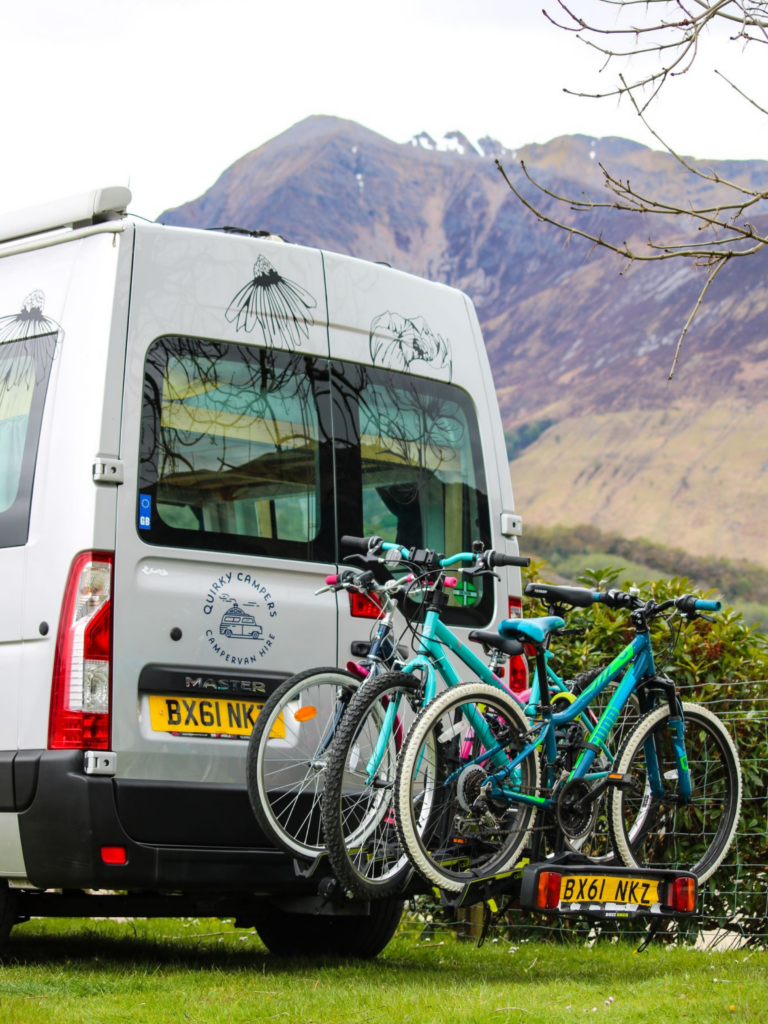
Every vehicle has a legal permissible maximum weight limit. If a vehicle is driven when over this weight limit, it can be taken off the road and the driver fined. It is a lot easier than you might think to go over the limit with a self conversion and it happens all the time. So you need to be thinking about weight when converting a campervan to hire from the outset.
Terminology
Several different terms are used to mean the same thing.
Maximum authorised mass (MAM):
The maximum authorised mass is the weight of a vehicle or trailer, including the maximum load that can be carried safely when it’s being used on the road. This is also known as gross vehicle weight (GVW), max laden weight, permissible maximum weight, revenue weight, or even maximum technically permissible laden mass (MTPLM) in the case of factory fit motorhomes.
Unladen weight:
The unladen weight of any vehicle is the weight of the vehicle when it’s not carrying any passengers, goods or other items. This includes the body and all parts normally used with the vehicle when it’s used on the road. This is also known as kerb weight. Once your van has been converted into a campervan, its new unladen weight would include the conversion itself.
Payload:
Payload is the difference between the unladen weight and the MAM. In the case of a campervan it is the maximum allowed total weight of passengers and all their baggage. For more info in this gov.uk/vehicle-weights-explained
Units:
This guide will refer to all weights in kilograms (kg), but you may find on your vehicle information plates or documents that tons are used. So, for clarity, 3500kg is equal to 3.5t.
Vehicle weight plates
The Vehicle Weight Plate is a label on the body of the vehicle where the vehicle’s weights are recorded. You will find it either under the bonnet, or inside the frame of the driver or passenger door. This photo shows an example weight plate from a Citroen Relay.
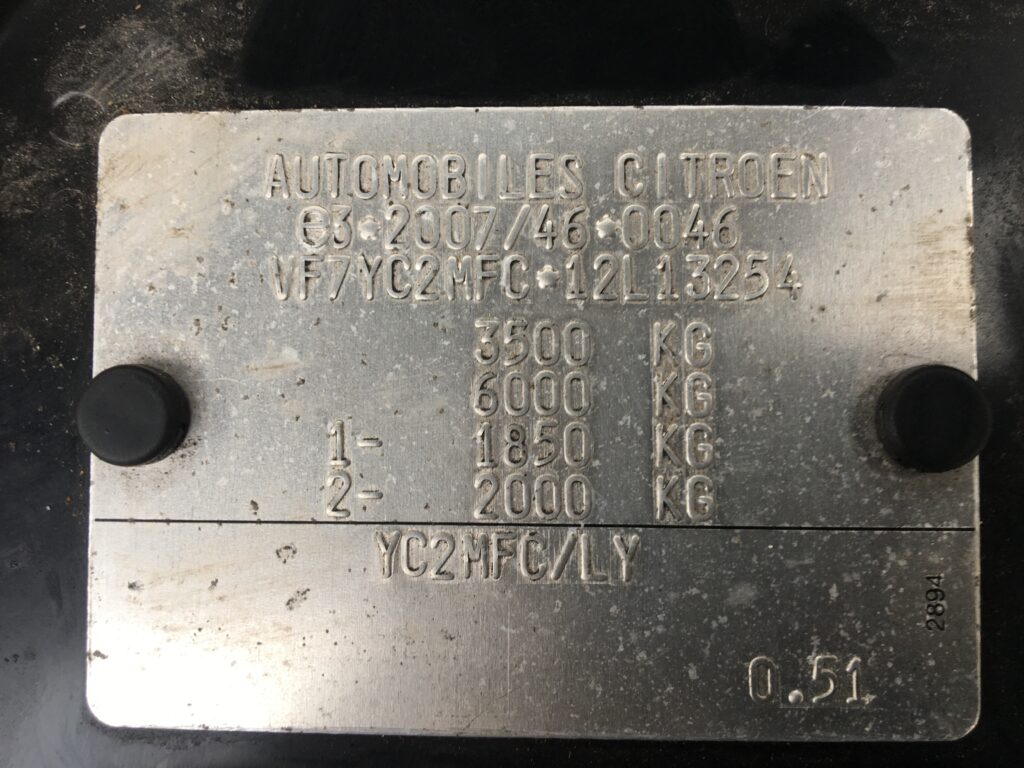
The numbers listed in order are:
- Maximum authorised mass (MAM)
- Permissible towing weight (GVTW)
- Maximum permissible front axle load
- Maximum permissible rear axle load
The most important one is number 1 the MAM. Note: if this is over 3500, you will probably need C1 on your licence to drive it.
Start at the beginning
If you haven’t started your conversion yet then now is the perfect time to think about weight. The importance of weight depends on the type vehicle you are going to convert:
We’ve categorised some of the most common vans into ‘Not likely to be an issue’, ‘Worth being aware of’ and ‘Critical’.
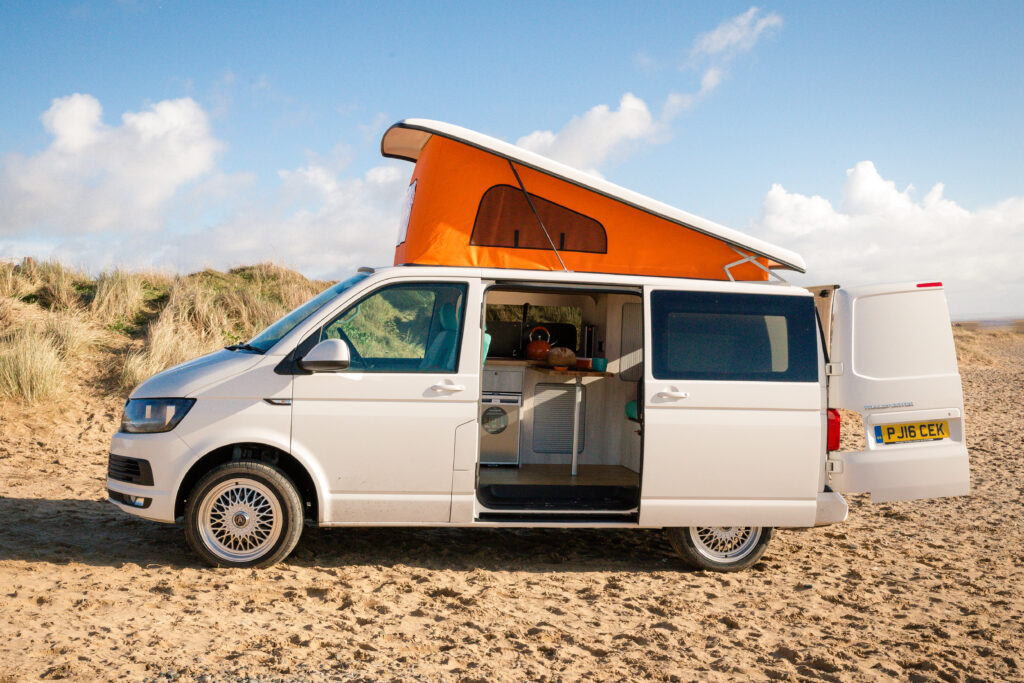
Not likely to be an issue
- Super compact, for example, Berlingo
- Compacts, for example, VW transporter or Bongo
- Low-roof Short Wheel Base (SWB or L1H1)
Worth being aware of
- Long Wheel Base (LWB) or fixed high top VW Transporter
- Any Medium Wheel Base (MWB)
- High-roof SWB
Critical
- Any LWB
- Any Luton
- Box van or Horsebox
- Ex Municipal Minibus
- Ex Ambulance, Riot Van or similar
- Vans with an MAM of 2,800kg (rather than the usual 3,500kg)
Estimating the final weight
For vehicles falling into the ‘critical’ category I would recommend you put together a full list of all the materials, appliances and items you intend to include in your conversion and estimate the weight of each. This obviously won’t give you a precise final weight but it should give you an indication of whether you will end up with enough payload for your intended use. It may well be that you can’t have the hardwood floor AND the shower…but it’s much better to find that out before it’s too late to make the choice. Note: 1 litre of water weighs 1 kg but diesel is a bit less at 0.85kg/l
Usage vs Payload
The conundrum with any conversions is that if you want the vehicle to be suitable for more people it’s going to weigh more (more beds/seats etc). However, you’ll also need a larger payload for the additional passengers. It is possible, even likely that if you are doing a conversion for 5 people and don’t pay close attention to the weight that you will end up with a vehicle that can only legally carry 3. You should be aiming for a payload which would allow normal reasonable use with the advertised occupancy.
How to weigh your campervan
The government website lists weighbridges around the country, but most recycling centres, scrap metal yards and landfill sites will also have them. If you drive onto the scales, you can request a weighbridge reading for a fee (price varies from £5-£50) and you should also be able to get a printed readout.
Get your van weighed both before you start converting it and at the end of your build. If your van falls into the ‘critical ’ category, you may also want to get it weighed part way through when you still have a chance to change your design and the materials you’re using.
The unladen weight needs to be a realistic heaviest example of the vehicle as it would be when you’re hitting the road for an adventure. This would include:
- A completed conversion!
- Full water tanks
- Full fuel tanks
- Full gas tank
- All the usual kitchen equipment
- Mattresses, bedding, towels
- And if offered: bike rack, extra tents, portapotty etc
The difference between the result of this and your MAM is your payload:
MAM – Unladen = Payload
Weight distribution
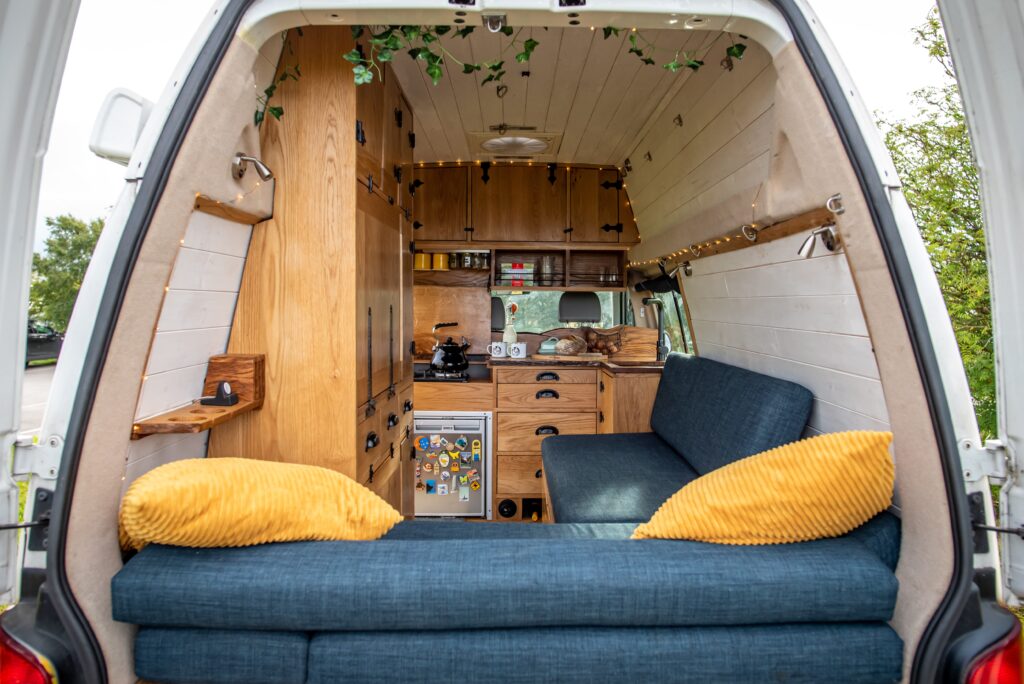
We often think about the weight of a campervan in terms of the total maximum, but it’s also important to think about the weight distribution.
It’s the heavy items you need to think about when it comes to distributing weight:
- Fresh water tank
- Grey water tank
- Batteries
- Fridge
- Additional belted seats
- Storage for things like bikes, kayaks, paddle boards
You need to think about weight distribution from left to right of the van, front to back, and top to bottom.
Top to bottom
As a general rule, you should store your heavy items as low as possible to make your centre of gravity low.
This is why race cars are often very low to the ground – it helps keep the vehicle upright, stopping it from rolling over in bad conditions or a crash. The difference is often felt when driving around a corner – a van with a low centre of gravity will feel steady and stable whereas a van with a higher centre of gravity will feel unstable, almost like a boat floating on water!
When building your van, keeping your centre of gravity low can mean mounting your water tanks underneath your van and storing your batteries on the floor. Then storage for lighter items like your duvet and pillows can go up high.
Left to right
Keeping the left and right side of the vehicle balanced will not only help your vehicle handle the roads better, especially on corners, but it will also help ensure your tyres wear evenly.
So, if you’re putting a big water tank on one side of the van, you could put the batteries on the other side to balance it out.
Note: 1L of water = 1kg of weight
Front to back
It’s a good idea to keep as much of the weight as you can between the front and rear wheels. If there’s too much weight behind the back wheels, it can act as a pivot point, putting more weight on the back wheels and less on the front. This is a small difference that you won’t notice just from looking at the vehicle, but it can cause big issues with handling, steering and traction.
Thankfully the area between the front and back wheels is the biggest, as there’s usually only a little overhang behind the back wheels, so you should have plenty of room for your heavy items.
Uprating and downrating your MAM
It is uncommon, but not unheard of, to change your van’s Maximum Authorised Mass. If you have made your van too heavy, you may want to uprate it. Or, if your van is rated over what you’re licensed to drive, you may want to downrate it.
Uprating to 3,500KG
While most vans have a Maximum Authorised Mass of 3,500kg, some can be lower with no obvious indication that this is the case.
A Quirky Campers owner was very conscious of weight when they built their first van, a Mercedes Sprinter. They ended up finishing the conversion at a very respectable weight of 2,540kg, with an assumed payload of 960kg, only to find out that their van’s Maximum Authorised Mass (MAM) was just 2,800kg instead of the 3,500kg they had assumed.
Most vans have been manufactured to carry more than their MAM so in many cases, it is possible to uprate it. In this case, Mercedes Sprinters often have a MAM of 3,500kg but this van ’s just happened to be 2,800kg.
Thankfully, uprating it was a simple process that just involved some paperwork, photos and paying a fee through the company SVTech.
Uprating from 3,500KG
The same owner from the story above built another van – this time it had the more common MAM of 3,500kg but they needed more! Just like with uprating to 3,500kg, they were able to uprate from 3,500kg to 3,850kg following the same process.
So if it’s so easy to uprate, why not always do it? Especially with a campervan where the more payload, the better! Well, if it has a MAM over 3,500kg, you might not be able to drive it.
Your driving licence dictates the highest MAM you can drive. For anyone with a licence issued after 1997, you’re limited to 3,500kg and would need to get a C1 licence to drive a vehicle over 3,500kg. If you got your licence before 1997, you can already drive vehicles over 3,500kg.
Downrating to 3,500KG
If you’ve bought a van with a MAM of over 3,500kg but don’t have the right driving licence, you may look into getting it downrated.
It’s a similar process to uprating, but you need to ensure that you definitely won’t need the additional payload that a higher MAM would allow for.
If you do have the right licence for driving a vehicle over 3,500kg, there probably isn’t much point in downrating it.
Hiring out your campervan
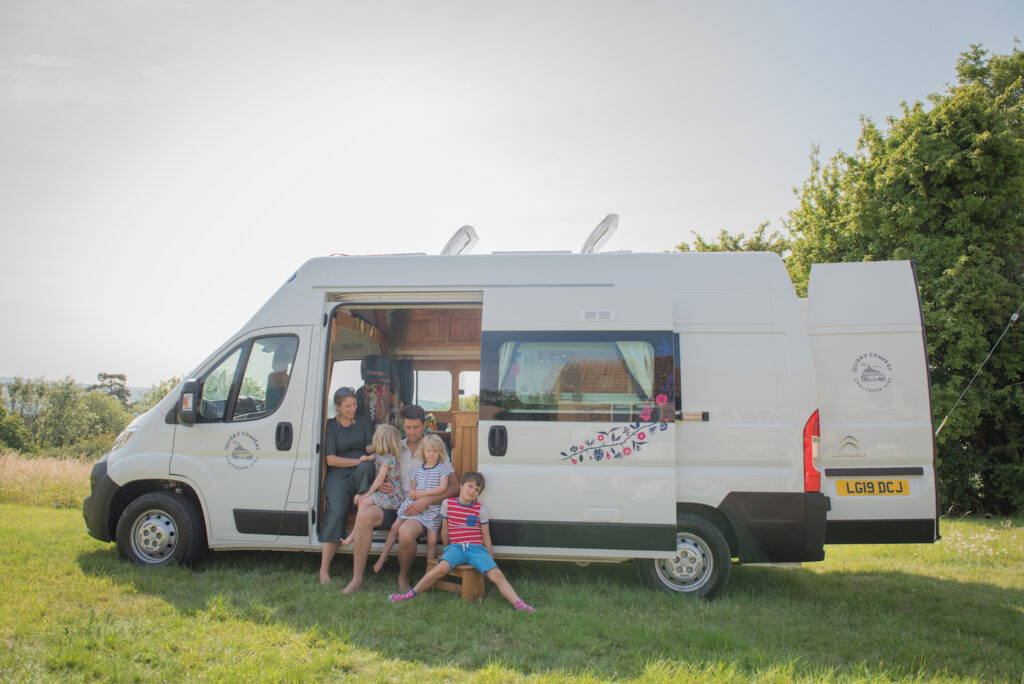
Thinking of hiring out your campervan? It is the vehicle owner’s responsibility to make sure all drivers are clearly informed of any limitations in using the vehicle. The unladen, MAM and payload weights should be displayed in the vehicle along with the dimensions and any other restriction.
Normal Use:
I use the following as a rough guide to what a hirer might reasonably expect the payload to be for different capacity vehicles
- 280kg for up to 2 people (1 driver + 1 passenger)
- 370kg for 3 people
- 460kg for 4 people
- 550kg for 5 people
- 640kg for 6 people
However, this is just a rough guestimate and there are many factors that might imply a larger payload for example roof rack, large storage areas or a tow bar. NOTE: The recommendations in the blog have not been checked for legal accuracy and are merely the writer’s own opinions.
For more information on weight, gas, electrics and any other aspects to converting a campervan, check out our How to Convert a Campervan book (it even features a campervan weight worksheet!)
And if you’re looking to hire your finished campervan conversion through Quirky Campers, we’d love to hear from you!
-
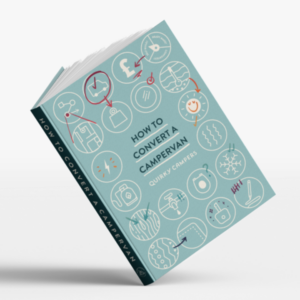 Hardback & Ebook£14.95 – £24.95
Hardback & Ebook£14.95 – £24.95




